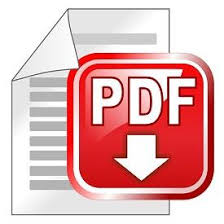Location:
PMKI > Project
Controls and Scheduling > Reporting &
Communicating Controls Information.


- Communication theory, strategy
and practice
- The challenge of communicating
controls information effectively
- Useful External Web-links &
Resources.
Other related sections of the PMKI:
- Communication management
- Advanced Stakeholder
Engagement
 Effective communication is a core component of project
success, it involves making appropriate and necessary
information available to project stakeholders in a timely
manner and responding to their requests for information.
Depending on the stakeholder, information may need to be
communicated at the strategic level or at the specific
task performance level.
Effective communication is a core component of project
success, it involves making appropriate and necessary
information available to project stakeholders in a timely
manner and responding to their requests for information.
Depending on the stakeholder, information may need to be
communicated at the strategic level or at the specific
task performance level.
PP: Beyond Reporting - The Communication Strategy. Communication is a science and an art. Communicating effectively with the project’s important stakeholders, so that their expectations can be both managed and met, is central to achieving a successful outcome. Reports are not enough! Communication is a complex two way process within the overall relationship between the project and the stakeholder. This paper identifies the key processes involved in developing and implementing an effective communication strategy. Download the paper.
Blg: Mind your language. A picture may tell a 1000 words, but it need to be a well designed picture if the message is to be meaningful.
Art: What’s the message?? The way schedule reports are designed can change the understanding of key stakeholders.
Art: Is Planning Predictive or Persuasive? Do project plans predict or create the future? While schedules on occasion may become ‘self-fulfilling prophecies’, is this because the schedule was an accurate predictor of the future, or did using the schedule change behaviors? This article suggests that too much emphasis is placed on developing ‘perfect plans’ that attempt to accurately predict future outcomes (a passive process), and not enough on using the planning and scheduling processes to proactively influence the future direction of project work.
Click through for more on project communication management.
Scheduling for effect requires an effective schedule, effective communication and a team culture that is prepared to make use of the schedule information. These papers look at the challenge of effectively communicating project controls information.
Blg: Organizational Governance and Project Controls This post looks at the two way responsibility for providing ACCURATE controls information to the organizations directors. Before making use of project controls information the directors are legally required to have reasonable grounds to believe the officers and employees providing the information are reliable and competent people, and the director has made an independent assessment of the accuracy of the information. Conversely, the officers and employees who ‘make available or give information, or authorizes or permits the making available or giving of information’ to a director that relates to company affairs can be prosecuted if they have not taken reasonable steps to ensure that the information is complete, accurate, and is not misleading.
Prs:
Communication in organisations: making the
schedule effective.  There
is no point working hard to develop a schedule that is not
used! One of the major challenges facing project teams and
PMOs is effectively communicating the technical data
created as a result of developing or updating a schedule
(and other project specific information). Simply sending a
mass of complex data to a manager or team member is not
communication. Communication requires the transmission of
information in a form that is understandable and relevant
to the recipient. Only when the information has been
received and understood can it be used by the recipient to
influence their decisions about future actions. This
presentation looks at the schedule from the perspective of
its role as a communication medium that can have a
powerful influence on the successful delivery of a
project, provided the information contained in the
schedule is understood and used. With effective
communication, the schedule can encourage the engagement
of stakeholders, assist in minimizing risks and highlight
issues. Download the presentation.
There
is no point working hard to develop a schedule that is not
used! One of the major challenges facing project teams and
PMOs is effectively communicating the technical data
created as a result of developing or updating a schedule
(and other project specific information). Simply sending a
mass of complex data to a manager or team member is not
communication. Communication requires the transmission of
information in a form that is understandable and relevant
to the recipient. Only when the information has been
received and understood can it be used by the recipient to
influence their decisions about future actions. This
presentation looks at the schedule from the perspective of
its role as a communication medium that can have a
powerful influence on the successful delivery of a
project, provided the information contained in the
schedule is understood and used. With effective
communication, the schedule can encourage the engagement
of stakeholders, assist in minimizing risks and highlight
issues. Download the presentation.
Blg:
Do management techniques such as Scrum, Takt and Lean
Construction improve performance?
This post looks at how the Hawthorne Effect and
Heisenberg’s Uncertainty Principle can be used to improve
the effectiveness of the schedule in team planning
sessions.
Blg: Lies, Damned Lies and Statistics This post looks looks at this quotation in practice – how you present data to management can really change the message without distorting the underlying data. Based on a peer reviewed study of COVID-19 deaths of people over 50 in NSW, Australia, the post show how by selecting the data used in a report you can change the message completely. The data and report are technically correct, but the message is wrong!
Prs: Seeing the Road Ahead - the challenge of communicating schedule data. Useful schedules are useful because they are used! The successful delivery of projects requires a broad understanding of what is required to be achieved, by whom and when. However, from the inception of modern scheduling in 1957 (and before), one of the key challenges facing schedulers has been to convert the rich data contained in their schedules into useful information that the project team can actually use. The first part of this presentation outlines the evolution of the graphical presentation of time related data. It briefly reviews the history of visualizing time from 1765 through to 1957 and then focus on the challenges of presenting computer generated schedule data in a meaningful way starting with the hand drawn ADM networks created by Kelley and Walker in 1957. Diversions into mechanical forms of presentation such as Planalog, manual network diagramming and attempts to generate time scaled networks will be outlined through to modern tools such as NetPoint where the focus on presentation is at least as high as the focus on the underlying data. The second part of the presentation examines the problem these developments were attempting to solve; communicating complex data in a useful and informative way. The rich symbolic language of a well constructed CPM diagram is a far more effective way to communicate the complex ideas of timing, sequence and dependencies than words. This section of the paper will briefly outline some of the challenges involved in visually communicating complex data. It will then recommend a strategy for improving the effectiveness of the schedule. .Download the presentation.
PP: Understanding the Schedule - The challenge of informed consent. “The single biggest problem in communication is the illusion that it has taken place” [George Bernard Shaw] presenting a schedule does not mean the recipient has understood the information!
Communication is the mechanism for creating this information in the mind of the stakeholder (the data in a control tool is useless until it is communicated). Therefore communication is the only tool for the effective control of the delivery of organizational value through the mechanism of a project! Whether it is information about reasons for projects and programs being initiated, or reports on progress, management of stakeholder expectations, lessons learned or risk management; communication – the two way flow of targeted information – is the lifeblood of the successful delivery of the organization's strategic objectives. Everything is about communication – the artifacts and processes of project management such as schedules, reports, meetings, etc are all focused on creating and communicating information. Of equal importance are the choices made about the delivery and frequency of information exchanges, who is communicated with, and how the communication is targeted, formatted and of course its content. All of these aspects play a part in the information exchanges needed to build the appropriate connections, controls and relationships to ensure that the projects that an organization approves, funds and resources, deliver the expected value. Download the paper, or download the presentation.
PP: Controls
Communicate? Schedules cannot control anything
- they are inert sources of information!
Projects and programs are intended to deliver value to
organizations. Value is achieved when the outcomes of the
projects and programs meet the requirements and
expectations of the executive that approved, funded and
resources them. Decisions about which projects and
programs to select to deliver the best benefits to the
organization, assurance that these projects and programs
continue to deliver these benefits, and support to the
managers of projects and programs have one thing in
common: information. Information from your project's
control systems support the decision makers, informs
people and organizations of the work required to be done,
monitors progress, and provides support and assurance at
all levels of the organization of progress, or of the need
for intervention.
This paper explores how communication in the form of information exchange controls and assists the work of organization to create value and drive performance; and the effect caused by the way these control systems are developed to assure management that the work is progressing as planned. It will take a critical look at what can, and what cannot be achieved by project control systems (people, tools and outputs) in the effective management of projects from a communication, motivation and stakeholder management perspective, and explore how communication in the form of information exchange controls and assists the work of organizations to deliver value to all stakeholders. Download the paper.
Click through for more on stakeholder engagement.
Access the Guild of Project Controls Body of Knowledge. A suite of process-based documents which define Project Controls (membership required): http://www.planningplanet.com/guild/GPCCAR-modules